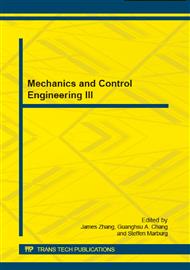p.7
p.12
p.17
p.22
p.27
p.32
p.39
p.48
p.58
Study of the Milling Process for Thin Components Using a Flexible Setup Configuration
Abstract:
In the aerospace industry, numerous large parts with complex curvatures and several thin wall/web pockets are required to ensure stiffness and low weight for aircraft structures. Costly processes and dedicated setups are usually required to machine such thin plate components. Therefore, investigating new machining methods involving flexible setups for such parts is an interesting avenue for cost savings, but a big challenge as well, due to a lack of support and part flexibility. In fact, a flexible setup is a tooling system with several adjustable positioning supports, which can easily adapt to different workpiece geometries. In this paper, an experimental investigation of the machining of pockets for thin components using flexible setup is presented. A design of experiments is proposed to verify the ability of pocket machining for thin plates of aluminum 2024-T3 in terms of quality. During the machining tests, the cutting forces were measured using a Kistler dynamometer table, while the displacement of the plates, for the flexible setup configuration, was measured using a Keyence displacement sensor. The force and displacement signals were analyzed and a fine correlation proposed between them and the resulting quality of the part, expressed in terms of profile and size errors.
Info:
Periodical:
Pages:
27-31
Citation:
Online since:
December 2014
Authors:
Keywords:
Price:
Сopyright:
© 2015 Trans Tech Publications Ltd. All Rights Reserved
Share:
Citation:


